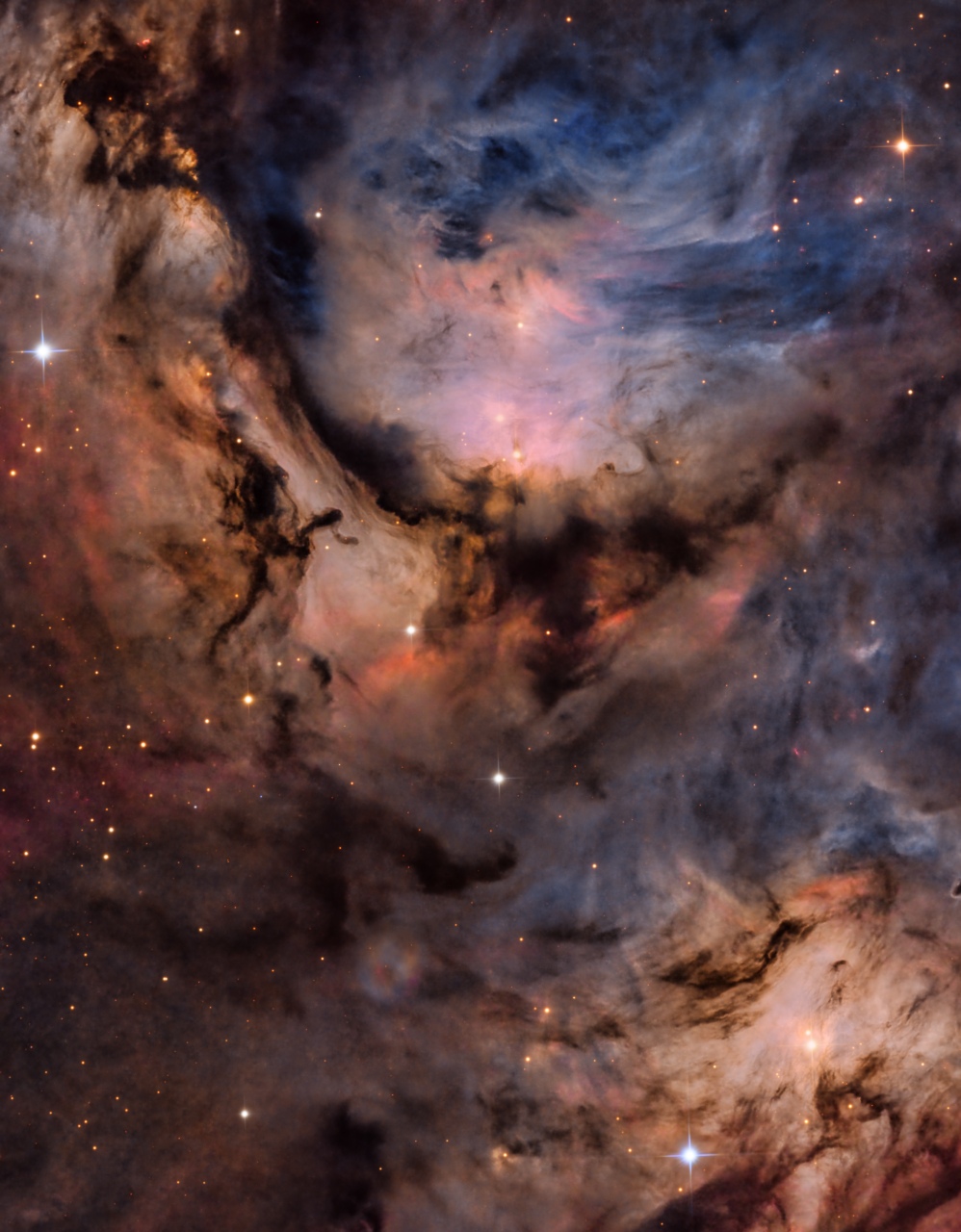Casper the Friendly Ghost (M78)

Messier 78: Orion's Friendly Ghost
Colloquially known as Casper the Friendly Ghost, Messier 78 (also catalogued as NGC 2068) is a prominent reflection nebula in the constellation Orion, about 1,350 light-years away. Known as one of the brightest of its kind, M78 features interstellar dust reflecting light from nearby young stars.
The distinctive glow of M78 is primarily due to two young stars, HD 38563A and HD 38563B. Their starlight reflects off the surrounding interstellar dust, producing the nebula's characteristic blue colour. This phenomenon occurs because shorter blue wavelengths of light scatter more efficiently than longer red wavelengths, creating the striking appearance seen in the nebula.

M78 is part of the Orion Molecular Cloud Complex, a well-studied region known for active star formation. Within this nebula are numerous young stellar objects, including T Tauri stars—proto-stars in the early stages of their development. Over time, these proto stars will mature into fully formed stars, with the potential to develop planetary systems.
The dense regions of gas and dust in M78 are essential to the star formation process. When gravitational forces surpass the outward pressure of gas, these areas collapse, leading to the birth of new stars.
Astronomical observations of M78 have significantly advanced our understanding of star formation. Infrared data from missions such as the Spitzer Space Telescope have been instrumental in penetrating the nebula’s dense dust, revealing hidden young stars within. As one NASA Jet Propulsion Laboratory astronomer noted, “reflection nebulae like M78 provide a window into the birth of stars and planets”.
Recent research has also identified Herbig-Haro objects within M78—jets of gas expelled from newly formed stars. These features provide critical clues about the energetic processes shaping the nebula and the dynamics of early stellar development.
 Messier 78 is an accessible target for amateur astronomers, even with small telescopes or binoculars, particularly under dark skies. It is located near Orion’s Belt, approximately 2.5° north of Alnitak, the easternmost star in the Belt.
Messier 78 is an accessible target for amateur astronomers, even with small telescopes or binoculars, particularly under dark skies. It is located near Orion’s Belt, approximately 2.5° north of Alnitak, the easternmost star in the Belt.
Through small telescopes, M78 appears as a faint, hazy patch of light, while larger instruments can reveal its intricate details, and the bright stars embedded within the nebula. The optimal time to observe M78 is during the winter months in the Northern Hemisphere, from late November to early March. During this period, Orion is prominently positioned in the evening sky, offering ideal viewing conditions.
References
- NASA/ESA Hubble Space Telescope Archives
- Spitzer Space Telescope Data on the Orion Molecular Cloud
- Scientific Journal: The Astrophysical Journal (Volume 876, Issue 2)
- “Star Formation in Reflection Nebulae” - Astrophysical Data Systems




